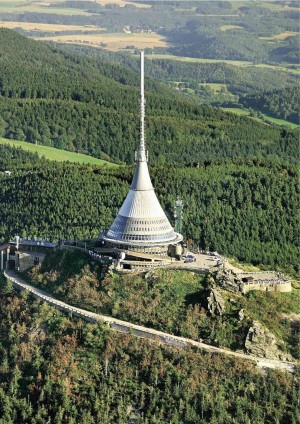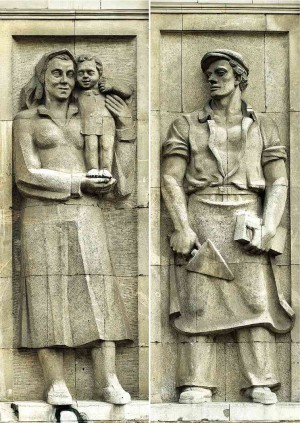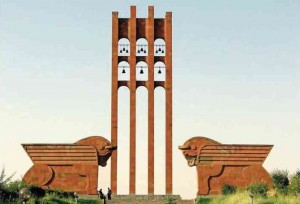
Each civilization expresses itself through language, ideas, and cultural individuality, and architecture is one among the many expressions of diverse cultural realities.
Visible in the varied structures built by different cultures is the wide architectural range from stone temples, mud and straw huts, Gothic churches, royal palaces, a building process that evolved through the years into today’s malls and skyscrapers.
Each structure or place is a marker of what once was a people’s simple daily lifestyle or lavishly built in the imagery projecting a government’s national aspiration.
The strong imagery of socialist realism, so evident in the architecture of the era, survives in the post-Socialist world that covers a large area including Central and Eastern Europe, Central Asia and China, reaching as far overseas as Cuba in the Caribbean.
The heavily symbolic architectural forms celebrate socialist ideals and achievements with strong, sturdy forms in poses that inspire the citizens to achieve greatness by working hard to achieve the common goals.
Symbolism
Symbolism is evident in oversized sculptures of heroes and representations of powerful leaders. The famous statues of Chairman Mao installed in all Chinese public squares are a well-known example of this genre.
Architectural monuments, designed to recall significant historical events, likewise inspire citizens to greater heroism.

Public buildings, many of them large and imposing, reach for the sky. Vertical details frame narrow windows. Slender spires rise past facades and rooflines to stretch the buildings skyward. The overall effect is commanding and certainly awe-inspiring.
Also imposing are the enormous government buildings and presidential residences, many of them grand and palatial, again symbolic of the power wielded within these structures.
The grand urban designs also convey power: Buildings line both sides of avenues, broad and straight, where thousands of soldiers can parade as seen in most socialist cities, but this phenomenon is not confined to socialist capitals.
The Champs-Élysées of Paris has the same kind of Napoleonic splendor.

Buildings of power follow the long tradition of symbolic architecture, such as London’s Houses of Parliament, still in use today as the center of British government, or Mussolini’s buildings in the EUR district of Rome.
Another example of symbolic and powerful architecture is the Royal Palace at Versailles, representing the supreme power and luxurious excess of Louis XIV. Today the excesses of Louis XIV have become one of the best-known anecdotal footnotes of French history, and Versailles has evolved into one of the premier tourist destinations of France.
A world away is the collection of temples of Angkor, once a symbol of power and excess of the Khmer kings, another premier tourist destination that also is revered as the national symbol of Cambodia.
Will the architecture of socialism, like Versailles and Angkor, survive as a testament to the political system that built them?
Architecture is a permanent record of an era and of the people who lived in that era, and structures from the socialist realism era form an important, although unrecognized, collection of globally significant 20th-century architectural heritage whose intrinsic worth is, in general, not publicly appreciated.
Threatened

These structures are under threat.
“Under rapid changes of material and functional demands and general neglect, the buildings and places of the socialist period are experiencing the irreversible process of degradation. Many of them are already, or will be, lost in the near future,” says the International Council of Monuments and Sites (Icomos), the international organization of heritage professionals.
“…The architectural and urban heritage of the socialist period is subject to vast political, social and economic changes, and receives little recognition as valuable heritage by authorities, the public and even by experts.
“These buildings and places are witness to the life and experiences of the former Eastern side of the Iron Curtain,” says professor Jörg Haspel, president of the Icomos German Committee.

“For most of the countries in Central and Eastern Europe, the post-World War II period was a climax point for introducing Socialist ideology, a political regime and economy alien to the historical nature of their regions.”
The political and social achievements of the era were creativity reflected in the structures, buildings and places constructed during that period which served the dual purpose of transmitting the socialist message through the impact of public art and imposing architectural monuments.
This is forgotten heritage architecture that deserves international appreciation and is definitely worthy of deeper study.
E-mail comments and feedback to [email protected]












































